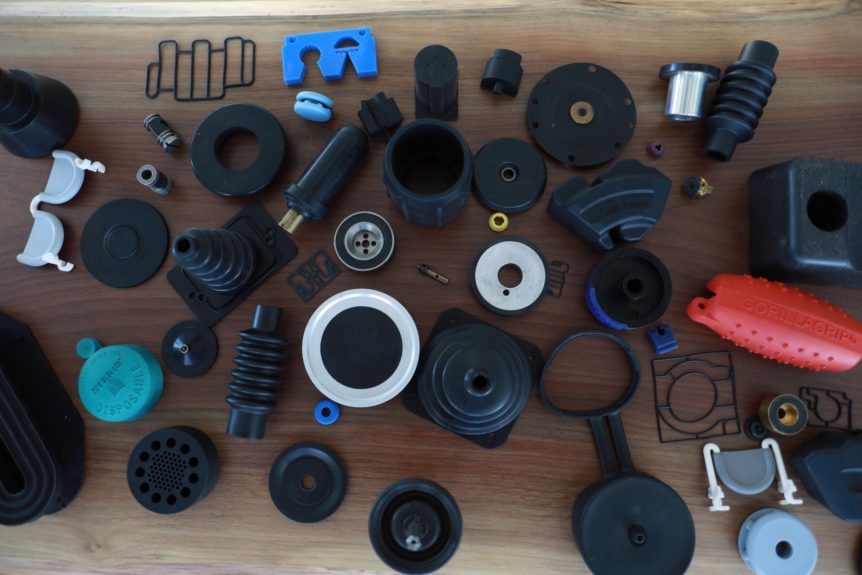Do you need rubber products in different sizes? Maybe you need a choice of rubber molding methods instead. The Rubber Group of Rochester, New Hampshire (USA) uses injection, compression, and transfer molding to produce molded rubber parts in sizes large and small. We can also help you to choose the best rubber molding process for your application. Whether you need standard or custom molded rubber products, contact us for value-added manufacturing that includes design assistance, rapid prototyping, process selection, and more.
Molded Rubber Parts in a Range of Sizes
Does your company buy custom molded rubber parts in a range of sizes? Instead of sourcing them from multiple vendors, you can simplify your procurement activities and order everything from us. In the transportation industry, for example, manufacturers ask us for molded rubber parts that range in size from large railcar suspension components to small valve body seals. They need rubber-to-metal bonded assemblies, too. In the power generation industry, customers ask us to supply them with everything from large insulators for power transformers to small rubber grommets.
For these and many other types of molded parts, The Rubber Group provides one-stop shopping. Our recent technology investments underscore our commitment to meeting all of your rubber molding needs. Earlier this year, we invested in a new DESMA 968.400 Benchmark (S2) injection molding machine for rubber parts. This new equipment complements our injection, compression, and transfer molding capabilities for smaller molded rubber components such as grommets, seals, and O-rings. To provide our customers with additional value, we’ve also added new laser marking capabilities.
Rubber Molding Capabilities and Process Selection
Whether you’re a designer, an engineer, or an industrial buyer, The Rubber Group can recommend the right rubber molding method for your application. Many customers are familiar with rubber injection molding, but transfer molding or compression molding could be a better choice for what you need. By learning how each process works and understanding the advantages and tradeoffs, you can make an informed decision that covers considerations such as part volumes and per-part costs, tooling costs and turnaround times, part tolerances and complexity, and available rubber materials.
For example, rubber injection molding is usually the right choice for high volumes of parts that require medium-to-high levels of precision. If you need tight control of dimensional tolerances, then transfer molding may be a fit. For flashless molding, both injection molding and transfer molding are options. For high value materials, The Rubber Group can incorporate wasteless molding that combines the speed and precision of transfer and injection molding with the low material waste of compression molding. Typically, compression molding is used for large parts and low volumes. For each of these molding methods, The Rubber Group’s ability to provide you with a cost-effective mold frame means that you can use the same rubber molding method for both rapid prototyping and parts production.
The Molded Rubber Products That You Need
Do you need molded rubber products in different sizes that are produced with different molding methods? You can reduce your vendor list and select the right rubber molding process by partnering with us. Before starting your next project, contact The Rubber Group.

